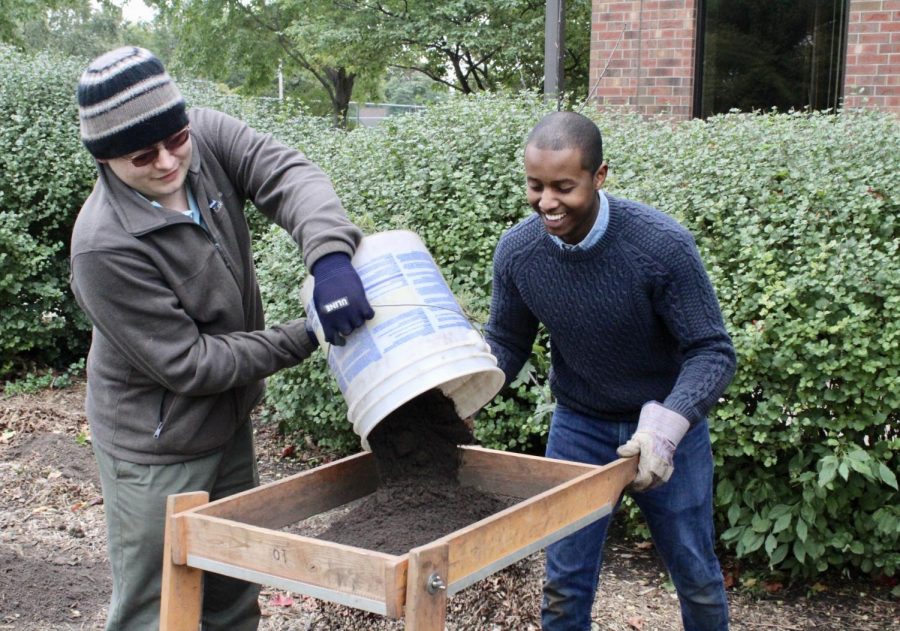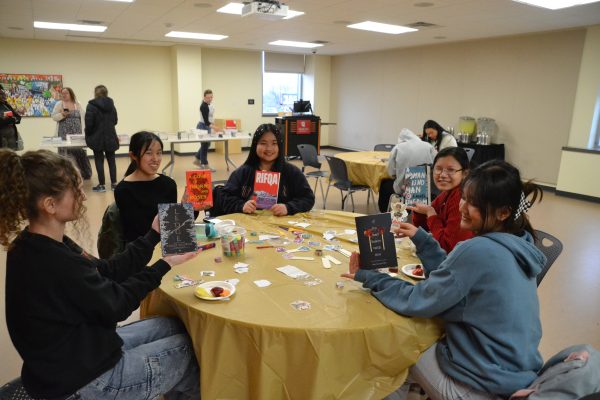Getting down in the HU dirt
Community Digs encourage public participation in excavating Hamline’s past.
October 30, 2018
Nearly a dozen Hamline students spent part of Saturday, Oct. 13 gathered around a three-foot hole in the lawn behind East Hall, participating in a public archeology project led by Anthropology Professor Brian Hoffman.
Kneeling on foam pads in and around the rectangular hole, these students scraped earth away from bricks and stone foundations buried several feet below the turf, collecting the loose soil in dustpans and buckets.
Their excavation was part of Hoffman’s “Excavating Hamline History” archeology course. It was also the second of two Community Dig events hosted by the anthropology department. These events invite the rest of the Hamline community to give archeology a try, which is exactly what first-year Emma Close decided to do.
“It’s super fun,” Close said. “Who doesn’t like to just dig in the dirt?”
First-year Hannah Bergene has attended both Community Digs this semester and has already decided to declare anthropology as a major.
The Community Digs are also open to neighborhood residents. Since the second dig was held over Homecoming weekend, several visiting alumni stopped by to see the work and talk about how Hamline’s landscape has changed.
“It’s kind of humbling, because you have a completely different experience of the space than I do,” Susan Jackson (Bauman) ‘73 said of the dig site.
Professor Brian Hoffman, who leads the course every fall, said the Community Digs are a powerful way for students to participate in public archeology.
“This is providing a way for my students to connect with the neighborhood and for the neighborhood to connect with the campus,” Hoffman said.
The East Hall dig site is one of many campus excavations students have participated in. Other sites include the Blue Garden, Klas Field and around Hamline Church.
The current site was first excavated in 2013. According to maps and records dating back to 1886, the site is over what used to be a stable or shed near the former site of the President’s House behind Bush Library.
So far, students have uncovered part of the foundation and wall of that structure. Their careful scraping has also uncovered various smaller artifacts, including shell buttons from the late 1800’s that a student discovered earlier this month or pieces of coal, glass and broken ceramic ware.
“These kinds of artifacts tell us about heating systems,” said Avery Marshall, a senior and anthropology major, who is working with the class as a teaching assistant.
Marshall helped with some of the excavation of the site back when she took the class as a student in 2016. She said she values this course for the emphasis it places on involving the community in the discoveries of the excavation.
“Public archeology is really important because what’s the point if you can’t get people together and learn about this?” Marshall said. “There’s so much we don’t know.”
Although Community Digs are over for the year, students interested in digging into Hamline’s history are invited to open anthropology labs held from 1 p.m. to 4 p.m. on Fridays in the basement of Drew Science Center.






